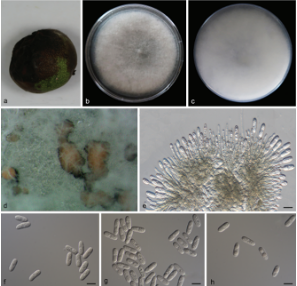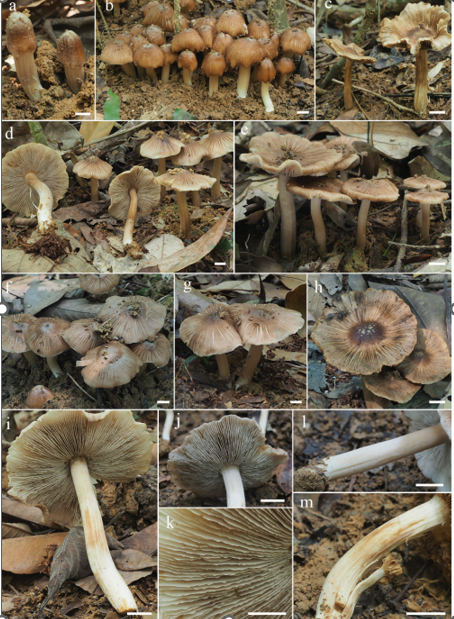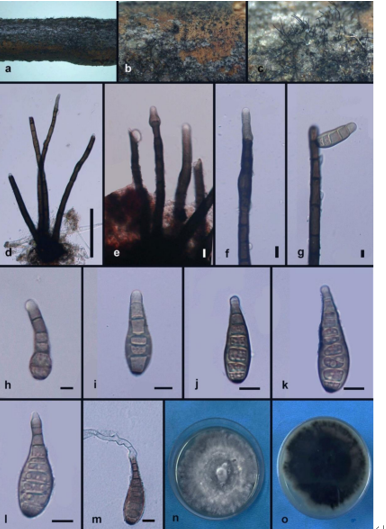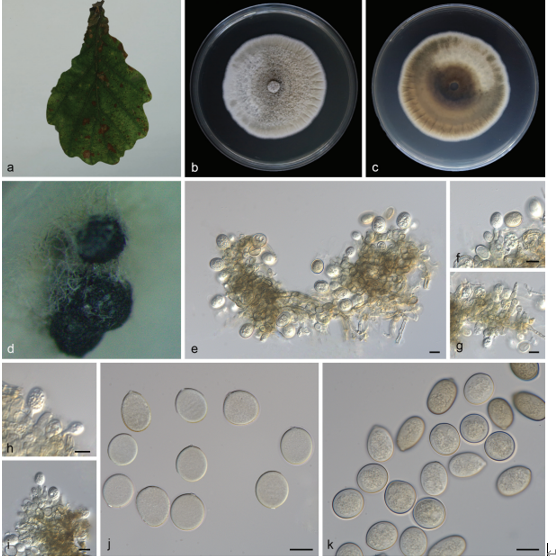Fulvifomes nonggangensis F.C. Huang & H.F. Zheng, sp. nov.2021
MycoBank MB835790
Holotype: China, Guangxi Autonomous Region, Chongzuo, Longzhou County, Nonggang Nature Reserve, on living trunks of angiosperm tree, September 19 2012, GXU1127 (Holotype in GXU).
Morphological description
Basidiocarps perennial, sessile, soli[1]tary, occasionally smaller pileus fused along adjacent margins with other, broadly attached on living trunk, and old fruit body also found on dead trunk, without odor or taste, woody hard. Pileus applanate, of old fruit body (4–5 years) projecting up to 11.1 cm, 14.1 cm wide, and 6.4 cm thick at base. Pileal surface capucine orange, orange to amber brown when fresh, capucine yellow to orange at the actively growing part, orange to antique brown, argus brown when dry, densely tomentose, up to 0.1 cm thick, rough, nodulose, separated by a dense black line tissue from context, concentrically sulcate indistinct to distinct, part of tomentum becoming thinner, nodulose less, and sulcate zone more distinct with age, margin capucine yellow to orange when fresh and capucine orange to raw sienna when dry, obtuse. Pilei of old basidiocarps (4–5 years) argus brown, raw umber to almost black, concentrically sulcate zone distinct, margin narrow, and each year re-expanding from the position beneath the margin forming by previous year, making peripheral part usually looked like slowly descending ladders, and the periphery also radially cracked. Context up to 2.8 cm thick, apricot yellow to orange citrine, woody hard, occasionally a few black line tissues randomly distributed in con[1]text. Context of old basidiocarps (4–5 years) up to 1.5 cm thick, carob brown to chestnut brown, and its tomentum becoming a thin layer. Tube layers capu[1]cine orange, orange to argus brown, woody hard, no stratified, or indistinct, up to 4.9 cm thick. Pores sur[1]face shining, raw sienna to antique brown when fresh, orange, argus brown to medal bronze when dry, sterile margin absent or narrow. Pores surface of old basidiocarps (4–5 years) orange citrine to medal bronze; sterile margin narrow to 2.8 mm width. Pores circular to angular, 5–6 per mm; dissepiments
thin to thick, entire or some lacerate on margin.
Habitat: Growing on living angiosperm trunks.
Distribution: China, Guangxi, Chongzuo, Nonggang Nature Reserve, on living angiosperm trunks, June 20 2012, GXU0501, GXU0766, and GXU1102; on dead angiosperm trunks, November 18 2018, GXU2254.
GenBank Accession: ITS MT571504; nLSU MT571502.
Notes: Differs from other species by basidiocarps perennial, sessile, solitary, pileus applanate, the per[1]iphery of pilei radially cracked on old fruiting body. Pores circular to angular, 5–6 per mm. Hyphal sys[1]tem dimitic, setae absent, cystidioles fusoid, 9.9–15.4 X 2.9–3.5 mm, basidiospores broadly ellips[1]oid, 4.93 X 3.73 mm on average.
Reference: Zheng, H. F. , Huang, F. C. , Liu, B. , Shao, Y. Y. , & Qin, P. S. . Fulvifomes nonggangensis and f. tubogeneratus (hymenochaetales, basidiomycota): two new species from southern china based on morphological and molecular evidences.
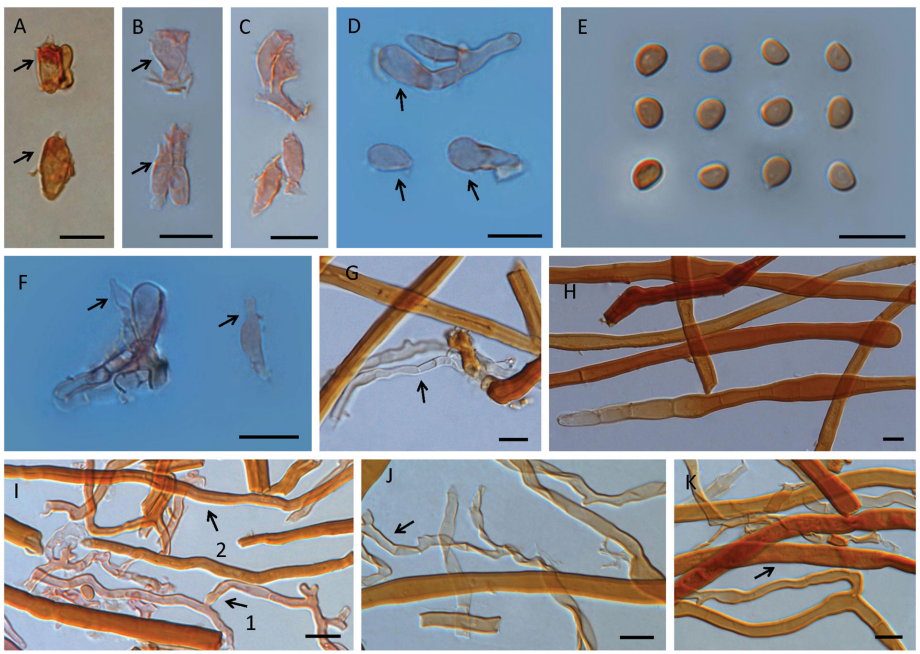
Microscopic structures of Fulvifomes nonggangensis. Scales bar: 10 lm. A, B, C: basidia; D: basidioles; E: basidio[1]spores; F: cystidioles (arrow pointed); G: generative hyphae from tomentum (arrow pointed); H: skeletal hyphae from tomen[1]tum; I: 1, tramal generative hyphae, 2, tramal skeletal hyphae; J: generative hyphae from context (arrow pointed); K: skeletal hyphae from context (arrow pointed).


